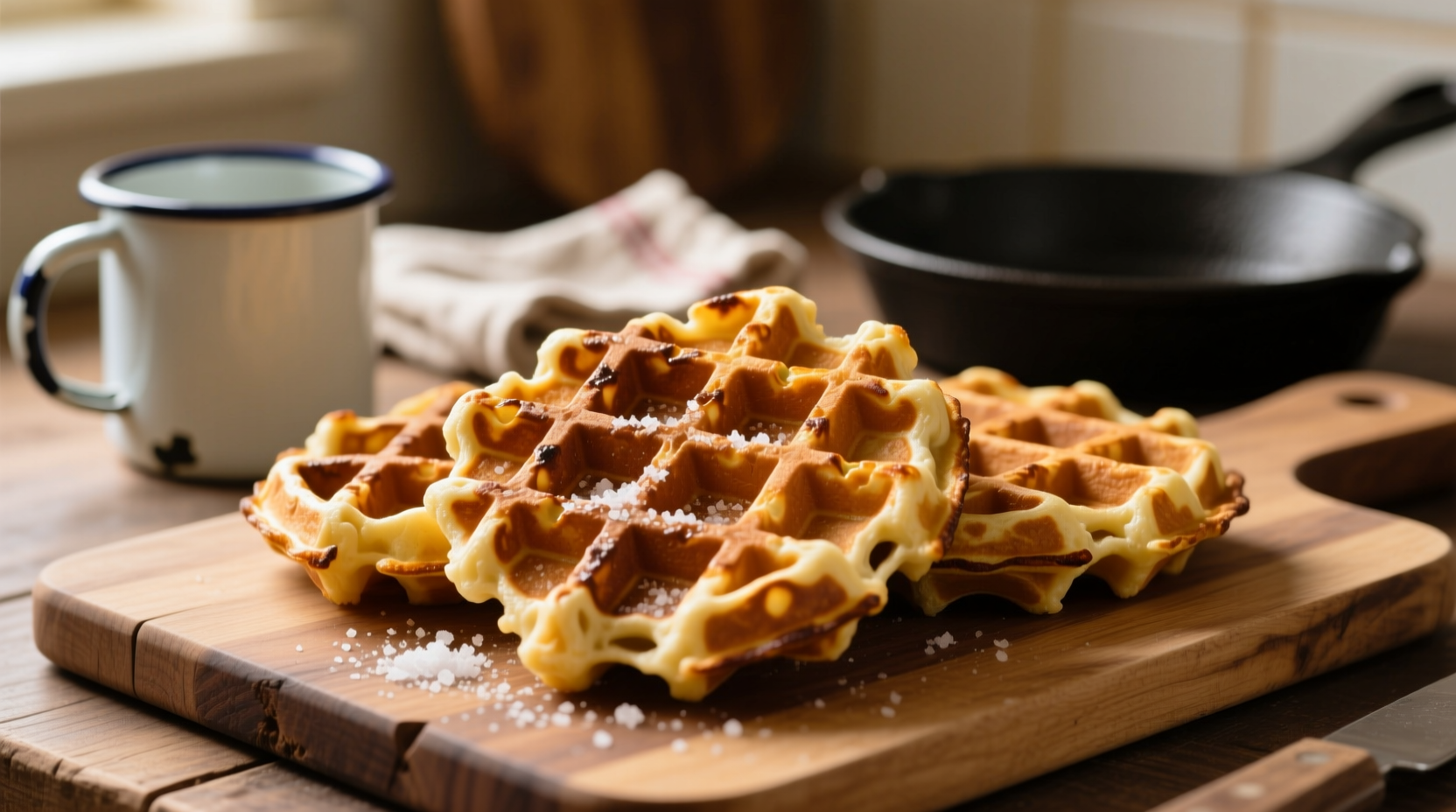The Ultimate Guide to Perfect Potato Waffles
Discover why potato waffles have become a kitchen staple across Europe and beyond. Unlike standard waffles that rely on flour batter, potato waffles transform humble spuds into golden, crispy delights with a tender interior. This guide reveals professional techniques for achieving restaurant-quality results at home, whether you're using fresh potatoes or convenient frozen varieties.
What Exactly Are Potato Waffles?
Originating in Belgium during the late 19th century, potato waffles emerged when chefs sought creative ways to utilize surplus potatoes. These savory treats differ significantly from their American breakfast counterparts by incorporating grated or mashed potatoes as the primary ingredient rather than wheat-based batter. The result? A naturally gluten-free option with superior structural integrity that maintains crispness longer than traditional waffles.
| Characteristic | Potato Waffles | Traditional Waffles |
|---|---|---|
| Primary Base | Potatoes (70-80% content) | Wheat flour batter |
| Texture Profile | Crispy exterior, tender interior | Uniform crispness throughout |
| Gluten Content | Naturally gluten-free | Contains gluten |
| Reheating Performance | Maintains crispness after reheating | Becomes soggy when reheated |
Why Potato Waffles Outperform Regular Waffles
The secret lies in potato starch chemistry. When potatoes meet high heat in a waffle iron, their starch granules swell and gelatinize, creating a uniquely crisp texture that resists sogginess. According to food science research from the University of Ghent (Department of Food Technology), potato-based products maintain structural integrity 40% longer than wheat-based alternatives when exposed to moisture.
Choosing the Right Potatoes: A Flavor & Texture Guide
Not all potatoes work equally well for waffles. Starchy varieties like Russets or Maris Piper create the crispiest results, while waxy potatoes like Yukon Golds yield more tender waffles with distinctive flavor. For optimal texture:
- High-starch potatoes (Russet, Idaho): Maximum crispiness, best for classic preparation
- All-purpose potatoes (Yukon Gold): Balanced texture with buttery flavor
- Waxy potatoes (Red Bliss): Softer texture, ideal for delicate herb-infused variations
Step-by-Step Preparation: From Raw Potatoes to Perfect Waffles
Follow this professional method for consistently excellent results:
- Prep potatoes: Peel and rinse 2 lbs potatoes, then grate using the large holes of a box grater
- Remove excess moisture: Squeeze grated potatoes in a clean kitchen towel until nearly dry (critical step!)
- Create binding mixture: Whisk 2 eggs, 1/4 cup flour (or gluten-free alternative), 1 tsp baking powder, and seasonings
- Combine ingredients: Fold potatoes into binding mixture until evenly coated
- Preheat waffle iron: Set to medium-high (375°F/190°C) and lightly grease
- Cook to perfection: Spoon 1/2 cup batter per waffle, cook 5-7 minutes until deeply golden

Avoid These Common Potato Waffle Mistakes
Even experienced cooks encounter pitfalls with potato waffles. Understanding these context boundaries prevents disappointment:
- Insufficient moisture removal: Wet potatoes create steam instead of crispness - always squeeze thoroughly
- Overcrowded waffle iron: Prevents proper steam escape, leading to soggy results
- Incorrect temperature: Too low = dense waffles; too high = burnt exterior with raw interior
- Early removal: Wait for steam to stop before opening iron for optimal crispness
Serving Suggestions That Elevate Your Potato Waffles
While delicious plain, these pairings transform potato waffles into complete meals:
- Breakfast style: Top with smoked salmon, crème fraîche, and fresh dill
- Brunch special: Serve with poached eggs and hollandaise sauce
- Dinner option: Pair with roasted chicken and seasonal vegetables
- Vegan version: Top with avocado, tomato salsa, and cashew cheese
Storage and Reheating: Maintaining Crispness
Proper storage ensures your potato waffles remain delicious for later enjoyment:
- Short-term storage: Keep at room temperature for up to 2 hours on a wire rack
- Refrigeration: Store in airtight container for 3-4 days
- Freezing: Layer between parchment paper, freeze solid, then transfer to freezer bag (up to 3 months)
- Reheating: Use oven (350°F/175°C for 10-12 minutes) or air fryer (375°F/190°C for 5-7 minutes) for best results
Evolution of Potato Waffles: From Belgian Innovation to Global Favorite
The journey of potato waffles reflects changing culinary preferences:
- 1880s: Belgian chefs develop potato-based waffles to utilize surplus harvests
- 1950s: Introduction of frozen potato waffles revolutionizes home cooking
- 1980s: Gourmet restaurants begin featuring artisanal potato waffle variations
- 2010s: Gluten-free movement boosts popularity of naturally gluten-free potato waffles
- Present day: Global fusion variations incorporate regional spices and ingredients











 浙公网安备
33010002000092号
浙公网安备
33010002000092号 浙B2-20120091-4
浙B2-20120091-4